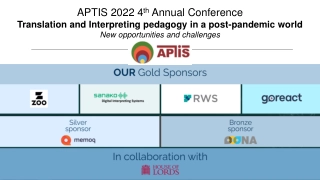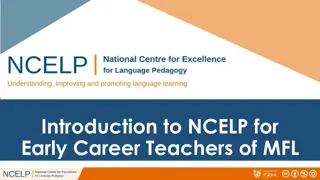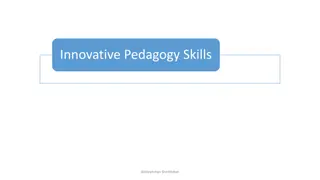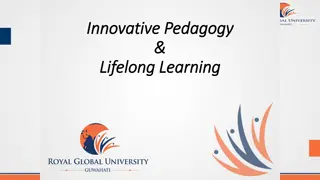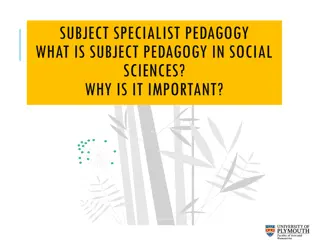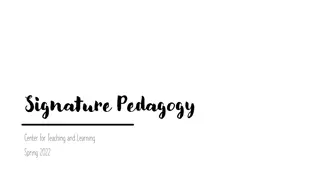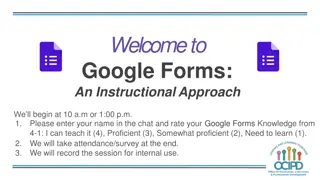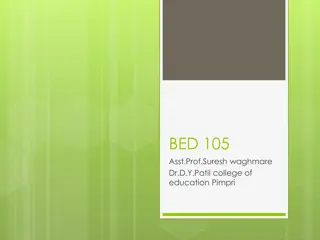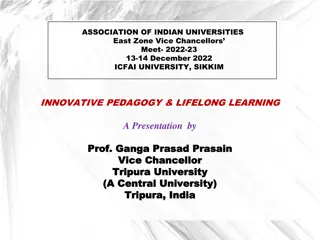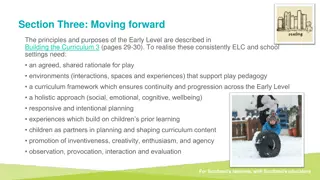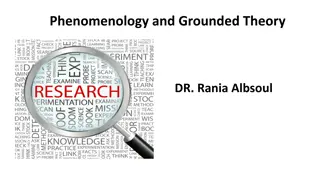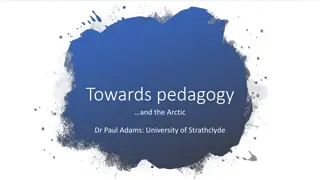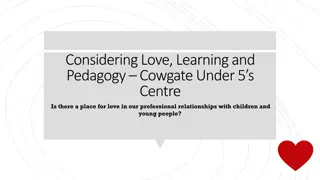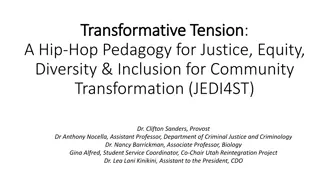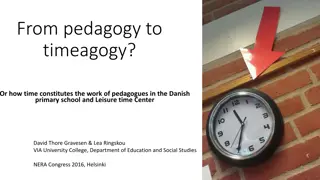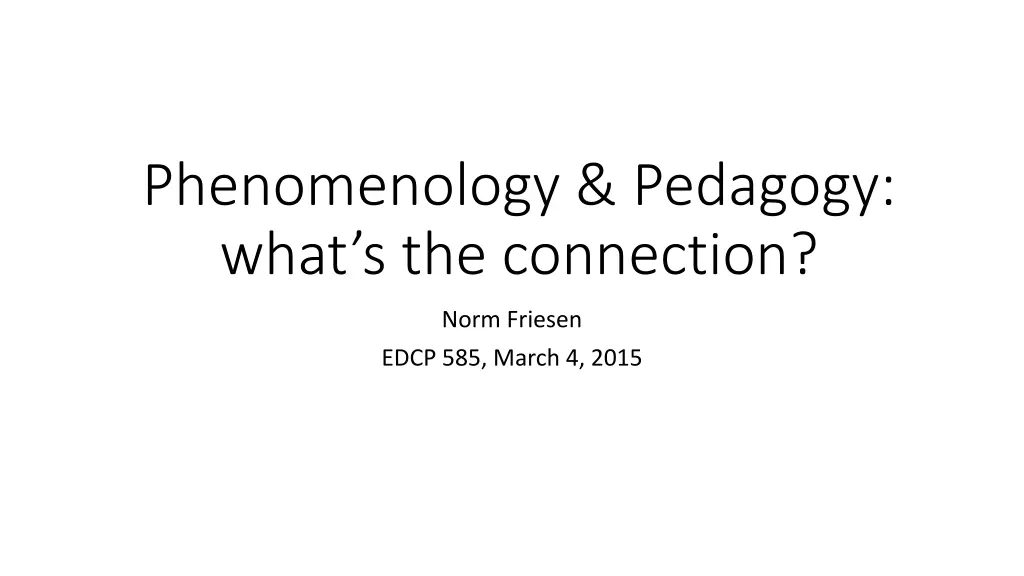
Connection between Phenomenology and Pedagogy: Understanding Lifeworld Consequences
Explore how phenomenology and pedagogy intersect to shape educational practices, focusing on the lifeworld consequences of teaching and learning. Dive into the essence of helping relationships in education and the significance of pathic knowledge in teacher practice.
Download Presentation

Please find below an Image/Link to download the presentation.
The content on the website is provided AS IS for your information and personal use only. It may not be sold, licensed, or shared on other websites without obtaining consent from the author. If you encounter any issues during the download, it is possible that the publisher has removed the file from their server.
You are allowed to download the files provided on this website for personal or commercial use, subject to the condition that they are used lawfully. All files are the property of their respective owners.
The content on the website is provided AS IS for your information and personal use only. It may not be sold, licensed, or shared on other websites without obtaining consent from the author.
E N D
Presentation Transcript
Phenomenology & Pedagogy: what s the connection? Norm Friesen EDCP 585, March 4, 2015
M.J. Langeveld, 1983 human beings are not creatures of necessity, but fundamentally open to transformation. Education is social & cultural; Does not unfold through nature; occurs beyond it Education: the resolve to bring into being for the sake of this child and with the help of this child, all that is essential to its being human.
There are many possibilities for the newborn These possibilities arise from others, from our contemporaries and predecessors. Realizing one or more of these calls forth the phenomenon of the helping relationship between adult and child which manifests itself in practical reasoning and acting in a multitude of social forms, documents, and institutional practices.
These unreflected practices steer us toward a reflective rethinking of this lifeworld, of this human being, of this way of being in the world. The consequences of education become consequences which are, or which are to become (for someone), the lived experiences of the lifeworld. We need a way of studying the lifeworld, the helping relationship of pedagogy and its lifeworld consequences
Way of studying the lifeworld of pedagogy In the West, this has been the lifeworld/human sciences To speak of the encounter does not mean that we meet others, but it means that we meet each other phenomenology permits us an understanding of the lives of those for whom we bear pedagogic responsibilities. They did not ask for this life and, therefore, they are our task, our life. (this life not natural, but our culture)
From lifeworld science to teacher practice Phenomenology can bring to our attention pathic knowledge; it is: embodied, actional, relational, situational In the context of our pedagogic possibilities & re- sponsibilities, this pathic knowledge is enacted as TACT
The mode of teacher action is tact tact A disposition; an attitude, a way of acting, a mood A way of being A way of being in the classroom and with students The OPPOSITE of: The OPPOSITE of: a set of instructions, only following a plan, what is fully conscious Fills the gap between a plan, a lesson and its execution Comes about NOT through planning and preparation (although these DO help), but through experience experience.
Herbart on Tact We must make it our business to free ourselves completely from the influence of habit, from force of which a father is inclined to repeat in his son the treatment he received from his father; a link intermediate between theory and practice. There is, to wit, a certain tact, a quick judgment and decision, not proceeding like routine, eternally uniform, but, on the other band, unable to boast, as an absolutely thoroughgoing theory should, that while retaining strict consistency with the rule, it at the same time answers the true requirements of the individual case.
Herbart inevitably tact occupies the place that theory leaves vacant, and so becomes the immediate director of our practice. One must tax not even one's memory to carry constantly the innumerable details which will require to be observed.
A literal & metaphorical POSITION (Herbart, 1804) Sage on the Stage: a lecturer or teacher; directive presentation Guide on the Side: mentors, coaches, catalysts and guides (King, 1993) Leading from afar (Herbart, 1804): Well-timed, truthful and patient words strength of conduct at the right time Give the student security then dare calmly leave him to his own development... Often consists of holding back and waiting or maintaining a certain distance so that the student may act for him- or herself.
Four expressions of pedagogical tact (Muth, 1962) Protection of the distance necessary in the pedagogical relation the binding character of teacher speech, the naturalness of teacher speech, the prevention of harm to the child. Tact particular to instruction: situational confidence, dramaturgical capability, a gift for improvisation, Spontaneity: a willingness to engage in free forms of action.
As I am apparently absorbed in completely practical concerns at the front of the class, my glance is actually gliding across the class, touching on each student. A thousand perceptions influence me from the borders of my conscious mind, and effect the momentum and shape of the lesson. My questions and answers, broadcast over all heads in the class, only increases the number of half-conscious impressions I have, and effect the logical development and methodical presentation that is the center of my awareness. G. Kerschensteiner 1921
Sources Herbart, J. F. (1802) Introductory Lecture to Students of Pedagogy. http://blogs.ubc.ca/nfriesen/files/2015/03/Herbart-INTRODUCTORY-LECTURE-TO- STUDENTS-IN-PEDAGOGY.pdf Kerschensteiner, G. (1921) Die Seele des Erziehers und das Problem der Lehrerbildung Langeveld, M.J. (1982). Reflections on Phenomenology and Pedagogy. http://ejournals.library.ualberta.ca/index.php/pandp/article/view/14870/11691 Muth, H. (1962). Pedagogischer Takt.

